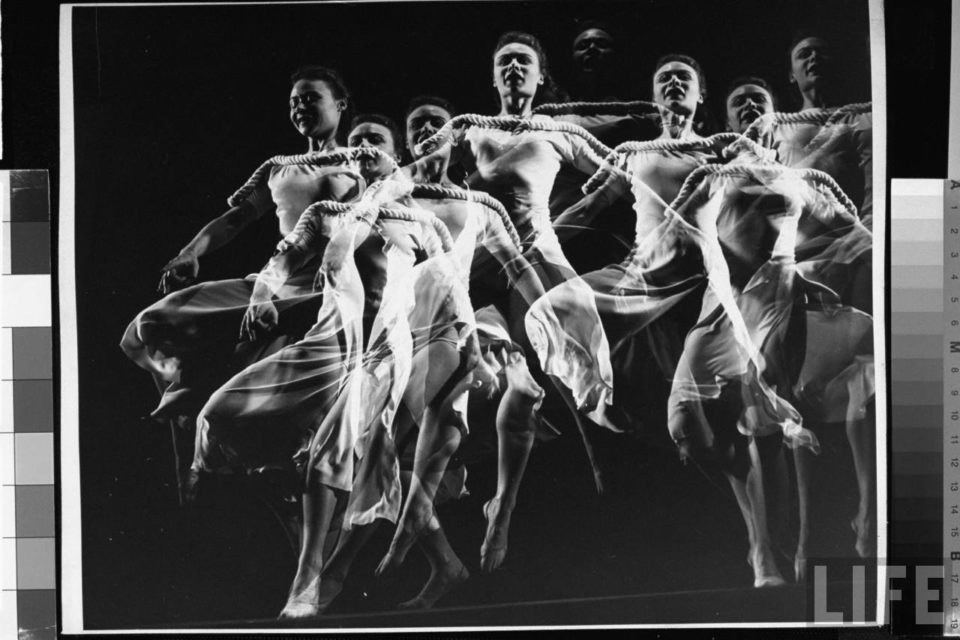As I get older, I realize that most problems and opportunities are multi-dimensional. There are many sides to every issue and many layers to every person. Things seem more complex, nuanced, and grey these days.
In 1964, Herbert Marcuse published his book One-Dimensional Man: Studies in the Ideology of Advanced Industrial Society, a wide-ranging critique of society in which social repression increases while revolutionary thinking decreases. This repression results in one-dimensional thinking in which creative problem solving and oppositional behavior wither away. He suggests that bureaucracy limits freedom as much under communism as it does under capitalism.

In his book, Marcuse strongly criticizes consumerism and argues that it is a form of social control. He suggests that only a few individuals dictate our perceptions of freedom and allow a narrow set of choices for achieving happiness. Consumers irrationally work more than they are required in order to fulfill basic needs and seek social connection though material items. A recent article in the New York Times refers to this phenomenon as romantic exploitation which means working harder and longer in order to buy bigger and better things, so that you can die with a large bank account and no soul. Marcuses’s major themes are:
- There are multiple dimensions of human existence in addition to the present one that have been systematically repressed.
- Technological rationality impoverishes all aspects of contemporary life.
- Scientific analysis is based on negative thinking which denies other possibilities.
- Established powers suppress all alternatives to the status quo in order to maintain power.
Notice the verbs and nouns in the four themes: repress, suppress, impoverish and deny possibilities, and alternatives and dimensionality. These nouns and verbs have implications for every aspect of our lives. In this post, I’m going to discuss the multi-dimensional possibilities of health, helping, and healing, but it is possible to apply those four themes beyond these three areas. Just think what might happen if we replaced the verbs repress, suppress, impoverish, and deny with open, allow, welcome, free, enrich, and affirm i.e. open up to new possibilities, welcome innovative alternatives, affirm our dimensionality. Whew!! It changes the energy doesn’t it? Here are three applications of this phenomenon.
Health is multi-dimensional. In the 1970’s when I was Director of Health Promotion at Samaritan Health Service in Phoenix, Arizona, I used FREEDOM as an acronym to cover the multiple dimensions of health: Fitness, Risk Reduction, Education Eating, Emotional Well-Being, Occupational Enrichment, and Mindfulness. While I found great enthusiasm in response to the first letter of the acronym, my words would fade into oblivion as I marched through the other six dimensions of wellness. We could get people to sign up for exercise classes, but their attention waned when we promoted better nutrition, improved intimacy, career development, or mindful meditation.
In 1983, Howard Gardner wrote the best selling book Frames of Mind: The Theory of Multiple Intelligences. In this book, Gardner proposed eight criteria to measure intelligence instead of viewing intelligence as dominated by a single, general ability typically measured by the IQ test. Gardner opposed the idea of labeling learners on one dimension of intelligence. He understood that labels limit potential whereas multi-dimensional perspectives enlarge possibilities.
I believe that IQ is a limiting view of intelligence just as fitness tests provide a limiting view of health. As I watched the closing ceremonies of the 2016 Rio Olympics, I worried about the lives many of the athletes will lead once the glory and excitement of the games are over. While I admire their dedication and their extraordinary abilities, I wonder about the price they pay for that level of one-dimensional achievement. I hope their Olympic experience gives them the confidence to explore multiple dimensions of life and that they don’t define themselves by how far they throw the javelin or how fast they run the 100 meter dash.

As a wellness director, I became so frustrated speaking to people who were only interested in the physical dimension of health that I left that job and ventured into the mysterious world of corporate culture change. I decided I wanted to help people create healthy, innovative, and productive work environments instead of sweating off a few extra pounds and building bigger biceps. I learned that helping was multi-dimensional as well. In order to have a real impact on individuals, it was necessary to change the norms and values of the organizations in which they worked. In order to have a real impact on organizations, it was necessary to improve the social, political, and economic environments in which they operated.
Helping involves content, process, and context challenges as well as organizational and community issues. You need to pick the right things to work on (content); you need to design efficient and effective processes to deliver the content; and you need to create supportive environments to reinforce the application of new skills. For example, a leader might need to improve interpersonal skills. The content might include attending, observing, listening, responding, personalizing, and initiating. Being able to deliver that content might require a teaching delivery process that explains the skill, demonstrates how and when to use it, gives the leader opportunities to practice the skill, and provides feedback on the application of the skill in multiple contexts. In my experience, most “helping” consists of lists of things to do, not multi-dimensional systems that address all aspects of a person’s life and the various contexts in which they function.
This notion that every solution requires a multi-dimensional approach and every person affected by that solution functions on multiple levels and layers led me to view healing in new ways as well. One of my best friends is a world-renowned orthopedic oncologist, so I have been privileged to hear about jaw-dropping surgeries he has performed to save hundreds of kids’ lives over the course of his career. I have a deep appreciation for medical science and all that it can do. I have also worked with a Chinese Qi Gong master for over 20 years and have witnessed the remarkable results of his healing powers with no assistance with a scalpel or drugs. Thus, I also stand in awe of the miraculous results of love and chi when applied by high functioning, master practitioners. I believe healing can be physical, emotional, mental, and spiritual and come in many forms. I wish scientists and spiritual healers would start appreciating the multi-dimensional nature of healing instead of dismissing each other.
In my experience, there are many lessons from not seeing the world from a one-dimensional, black and white perspective: Here are a few of those lessons:
- simple solutions rarely solve complex problems;
- linear thinking rarely addresses systemic issues in powerful ways;
- planning without relating never achieves sustainable results;
- hammers usually work best on nails for specific tasks;
- diets without exercise and support usually don’t work;
- interventions that don’t address the culture don’t last;
- wars without limited objectives and expansive follow-up tragically fail;
- promises without systematic programs increase frustration and social unrest.
So, as I grow older, I’m trying not to give into one-dimensional solutions painted sharply in black or white. I’m allowing myself to see the many shades of grey in more textured and nuanced possibilities. And as I become more open, I’m hoping to welcome a myriad of colors into my multi-sensory palate so that I can paint multi-dimensional, and multi-layered pictures of what life might be. As a result, I hope to help people become healthier…and heal some of the divisions in myself and the world.
Also published on Medium.


Another beautiful and thoughtful post! Thanks once again Ricky for being you! I truly believe that YOU should write your memoir for all the world to see! Ronny Donny
Oh dear Rick, now that I have to fish your posts out of the accumulation of “updates” in my gmail file I’m not so on top of them. :-) This is one is enriched by your sharing of work in the trenches of giving people a hand in the real world. I often find your observations from those years of experience most poignant. Yes, of course, how can a fellow aging soul fail to agree with allowing for complexities. And then, there is the issue that is tangentially related, and surely you know of, having to do with how we approaches complexities — in their multiplicity or potentially singular unity. Isaiah Berlin anyone? https://en.wikipedia.org/wiki/The_Hedgehog_and_the_Fox
After leaving a comment earlier I later realize that it might be even better to chime in by adding that even the simple can be complex. For there is the simplistic simple and the subtle simple, as distinguished in a more evocative, full phrase by the great 19th century American jurist, Oliver Wendell Holmes:
*I would not give a fig for the simplicity this side of complexity, but I would give my life for the simplicity on the other side of complexity.”
Artie, thanks for your wonderful comments. I always appreciate your perspective and insights. Yes to Oliver Wendell Holmes and Isaiah Berlin – the music and mystery of life.
Great thought provoking post Rick. You’ve reinforced some of my own learnings. I do think Artie’s comments about “simple can be complex” are valid. Sometimes the simplest solutions are actually the hardest. It can be very difficult to boil things down to their essence, which is often what’s needed to bring clarity. Thanks for a wonderful post!!
[…] their lives than my inmates. It was a bad assumption. People were much more motivated to improve physical and emotional factors in their lives than spiritual and intellectual possibilities. People would sign up for fitness […]